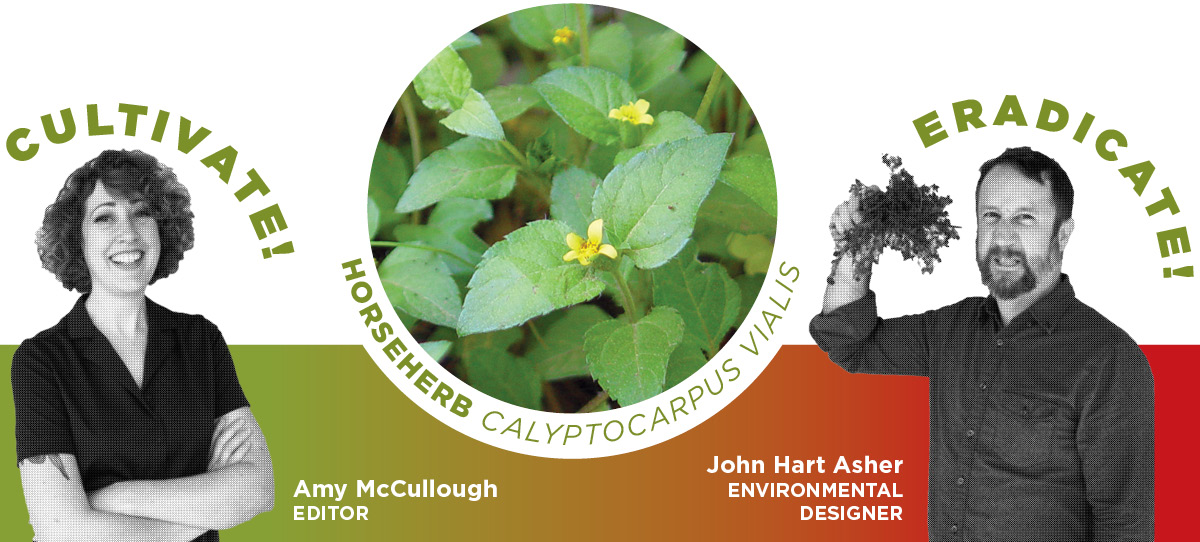Pull It or Plant It: Horseherb

AM: People love to hate on horseherb — what I call straggler daisy — I guess because it has a tendency to dominate yards and make otherwise diverse landscapes more homogenous. (It has been known to infiltrate spans of turfgrass, however, upping heterogeneity in those cases.) True to form, it was the only thing growing in my rental house’s mostly shaded backyard for the first eight years I lived in Austin, and I much preferred it to bare dirt and pebbles (and bottle caps and strange machine and toy parts, which also turned up). It still holds a special place in my heart.
JHA: Let me be clear, I don’t absolutely hate horseherb, but I am constantly battling it in my pocket prairie. The grasslands of Central Texas are disturbance-driven ecologies (think wild fires and high intensity, low frequency grazing), and therefore benefit from some rough love every once and awhile. So, you can feel good while enthusiastically editing this plant and chanting my mantra of “BE THE DISTURBANCE” with each savory swing of your mattock. Get in there and go crazy, kids; the Texas landscape ain’t no wimp!
WILDLIFE VALUE
AM: This perennial’s tiny yellow flowers attract Lepidoptera aplenty, from dogface butterflies and painted ladies to Texan crescents and variegated fritillaries. And it’s a useful host plant for bordered patch caterpillars. So they add color to your garden or yard in more ways than one!
JHA: OK, it attracts butterflies. I got it. But do you know what attracts even more butterflies? A species-diverse plot of wildflowers. What are you going to get if horseherb explodes? A temporary monoculture that outcompetes many of our beloved forbs. Boo.
MAINTENANCE
AM: Horseherb is semi-evergreen, doesn’t use much water, can grow in sun or shade, and practically propagates itself. This is perfect for (ahem) lazy gardeners and cost-effective to boot. Set it and forget it, y’all.
JHA: To remove horseherb, you have to go with chemical control or manual removal. We all know that chemicals can have negative collateral effects, so I wouldn’t advocate that unless a heaping stand covers your property. Otherwise, you have to dig, dig, dig, and be sure to remove all of the main root section or it will just resprout.
ON THE OTHER HAND …
AM: Familiarity does breed contempt, and you see this stuff everywhere. And there are perhaps prettier native groundcovers — woolly stemodia (Stemodia lanata) and silver ponyfoot (Dichondra argentea) both come to mind (but both also require way more sunlight). I admit a combination planting would be more aesthetically pleasing than a full yard of horseherb. But I’ll take what I can get, and I prefer it over bare ground or invasive turfgrass.
JHA: If you have a stand of invasive, water-wasteful turfgrass or a shady area where nothing else will grow, then horseherb might be the groundcover to spice up your life. The only caveat is that it will recede with the driest conditions and during winter, so you’ll be left with a bare spot during those times. You could mix it with Texas frogfruit (Phyla nodiflora) for a more permanent planting (though frogfruit is also a bit of a loner).

